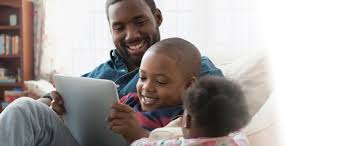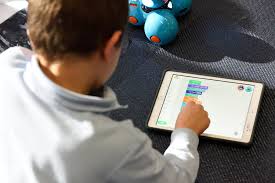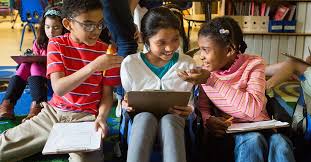What activities can you do with kindergarteners?
Fun learning games and activities for kindergartners
- Create a personalized placemat. This activity will help your kindergartner build reading and writing skills.
- Sorting beans.
- Amazing bubbles.
- Telling tales.
- Making hieroglyphics.
- Letters in clay.
- Create a name book.
- Make a personalized bookmark.
What games can my 5 year old play?
INDOOR GAMES FOR KIDS AGES 5-8
- Scavenger & Treasure Hunts.
- Simon Says.
- Duck, Duck, Goose.
- Hide & Seek.
- Charades.
- Indoor Obstacle Course.
- Musical Chairs.
- Paper Games.
What are good 4 year old games? Physical Development Games. Games can also be a great way to enhance your 4 year olds’ physical development. Games like tag, soccer, and freeze dance help to improve your child’s muscle skills and coordination in fun and engaging ways. They’re also a great way to wear your toddler out before naptime or a long car ride.
What are some hands on activities for kindergarten?
I look for Kindergarten activities for hands-on learning that include:
- Communicating ideas.
- Conversation and collaboration.
- Guided play prompts.
- Exploring interests.
- Opportunities to problem-solve.
- Creating playful environments.
- Encouraging imaginary play.
- Opportunities to construct and build.
What activities can you do with kindergarteners? – Additional Questions
How do you teach kindergarteners?
Getting Your Classroom Ready
- Integrate all of the tech.
- Prepare yourself for kids with a wide range of skills.
- Create an inviting classroom.
- Be prepared for changes.
- Gather all the supplies.
- Plan your circle time well.
- Get a jump start on lessons.
- Put together an irresistible classroom reading nook.
What are other learning activities?
15 active learning activities to energize your next college class
- Think-pair-repair. In this twist on think-pair-share, pose an open-ended question to your class and ask students to come up with their best answer.
- Improv games.
- Brainwriting.
- Jigsaw.
- Concept mapping.
- The one-minute paper.
- Real-time reactions.
- Chain notes.
What are examples of hands on activities?
What is hands-on learning?
- Solving problems as a part of math class.
- Completing a lab experiment as a part of a science class.
- Building circuits or working machines as a part of a tech class.
- Recreating a historical document or artifact as a part of history class.
What is hands on learning in early childhood education?
Hands-on learning encourages multi-tasking through listening, speaking, touching and using the senses to explore the environment. Hands-on learning engages children in problem-solving strategies. It allows young children to interact with the learning materials and make mistakes as they learn in a practical manner.
What is the meaning of hands on activities?
adjective [usually ADJECTIVE noun] Hands-on experience or work involves actually doing a particular thing, rather than just talking about it or getting someone else to do it.
Why are hands on activities important?
Hands-on activities let the students’ minds grow and learn based on the experiences and the environment they are exposed to. ELLs learn while discussing, investigating, creating, and discovering with other students.
What is the best way to educate a child?
Top 10 Things Parents Can Do to Help Kids Get the Best Education
- Participate at Your Kid’s School.
- Make Sure Homework Gets Done.
- Make Sure Your Kid is Ready to Learn When They Get to School.
- Teach Your Kid How to Put Stuff Where It Goes.
- Teach Your Child Study Skills That Work.
What are two ways to encourage children to learn?
Simple Ways to Encourage Learning
- Let your child know you believe in him or her. Tell your child often that you believe in him or her.
- Talk, sing, and read with your child.
- Involve your extended family.
- Limit your child’s TV watching.
- Have a positive attitude toward school and learning.
- Make sure your child does homework.
Which type of learning is best?
Kinesthetic learners are the most hands-on learning type. They learn best by doing and may get fidgety if forced to sit for long periods of time.
What are the 4 methods of learning?
The four core learning styles in the VARK model include visual, auditory, reading and writing, and kinesthetic. Here’s an overview of all four learning style types.
How do children learn?
How children and teenagers learn. Children and teenagers learn by observing, listening, exploring, experimenting and asking questions. Being interested, motivated and engaged in learning is important for children once they start school. It can also help if they understand why they’re learning something.
What are 3 main types of learning?
Everyone processes and learns new information in different ways. There are three main cognitive learning styles: visual, auditory, and kinesthetic. The common characteristics of each learning style listed below can help you understand how you learn and what methods of learning best fits you.
How do students learn best?
Students learn best when they’re challenged with novelty, a variety of materials, and a range of instructional strategies. Law of feedback. Effective learning takes place when students receive immediate and specific feedback on their performance.
What is the most common learning style?
Visual learners are the most common type of learner, making up 65% of our population. Visual learners relate best to written information, notes, diagrams, and pictures.
What are educational skills?
adj. 1 providing knowledge; instructive or informative. an educational toy. 2 of or relating to education. ♦ educationally adv.
What are the 7 learning skills?
The Seven Learning Styles – How do you learn?
- Visual (Spatial) Do you need to draw things out?
- Aural (Auditory-Musical) Do you dislike reading?
- Verbal (Linguistic) Do you love words and writing?
- Physical (Kinesthetic)
- Logical (Mathematical)
- Social (Interpersonal)
- Solitary (Intrapersonal)
What is a basic skills teacher?
What is Basic Skills Instruction (BSI)? Basic Skills Instruction is supplemental instruction in either Language Arts Literacy or Mathematics. Instruction and support are provided in the basic concepts and skills that students need in order to be successful in their classroom.




